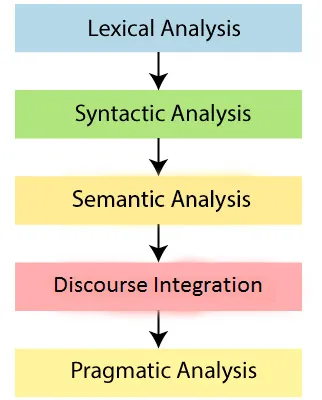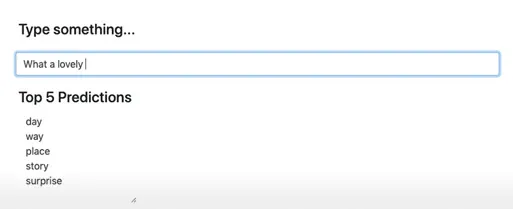As technology becomes more advanced, we are offered privileges we
could not have ever imagined and things that make our daily
activities easier. Every single thing that we express has some value
that can be extracted and converted into information.
Next word prediction, also referred as Language Modelling, is the
process of predicting what word or multiple words come next in an
application involving the basic task of typing.
We have been gradually accustomed to our mobile keyboards predicting
the next word without even realizing it. Nowadays, emails and text
based applications provides users with the ability to integrate this
option directly.
Taking it to the next level, the data scientists at Bluetick
Consultants have developed a model which predicts the next 5 words
in a sentence, whenever you hit the spacebar.
Understanding Natural Language Processing
With ever increasing volume of data, it is clear that the majority
of this increase is in the form of raw unstructured data. In simple
terms, this means that this data cannot be organized into rows and
columns or have dependencies with each other. Although thanks to AI
and ML, now we have the capability to organize and process this
data. The real challenge lies in understanding the meaning behind
these raw words and sentences, and understanding the figures of
speech like metaphors and irony or even determining the sentiment
behind these illustrations. Natural Language Processing (NLP), is
that branch of AI that deals with computers and human interaction
using the natural language.
In order to produce significant and actionable insights from text
data, to unlock the potential of text, we use NLP coupled with
machine learning and deep learning.
It is known that computers and algorithms do not understand texts
and characters, so it becomes essential to convert all the data in
machine readable form like binary or numbers.
A wide range of applications ranging from web scraping, text to
speech conversion, language translation and sentiment analysis use
NLP.
There are two major components of NLP, namely Natural Language
Understanding (NLU) and Natural Language Generation (NLG).
NLU helps interpret the different aspects of a language and maps
them into symbolic representations whereas NLG produces meaningful
sentences or phrases from these internal representations.
Steps used by a computer to translate the human languages
Lexical or Linguistic analysis helps in understanding the structure
and meaning of the text and is then transformed into a rule based
machine learning algorithm that can solve problems and complete the
desired tasks.
The Syntactic analyzer identifies the dependence and relationship
between the words. Any logically or naturally incorrect arrangement
is rejected during syntactic processing. The sentence “ A class is
taking the student.” will be rejected by the analyzer.
Breaking down a string of words into meaningful and useful parts is
called tokenization. This is followed by Part of Speech Tagging
(PoS) which segregates each word into noun, pronoun, verb,adverb,
punctuation, adjectives etc. This helps in identifying relationships
among the words and simplifies the meaning of the sentences.
The process of discourse integration has two major parts known as
Dependency and Constituency Parsing.
Dependency parsing defines the grammatical structure of a sentence
by listing each word as a node and attaches links to its dependents,
thus forming a tree-like structure.
Discourse integration helps with the arrangement and ordering of the
sentences as it interlinks the previous sentence with the current
sentence. This enables in interlinking a number of sentences and
deriving the complete meaning of these paragraphs.
Pragmatic analysis is the most challenging part of NLP as it
involves judging the context of the statement. To take an example,
the statement: “Do you know what time it is?” can be interpreted in
multiple ways.
One way can be a person asking the time from another.
Another interpretation can be a parent sarcastically posing it as a
rhetorical question to their child.

Engineers at Bluetick Consultants built a model which predicts the
top five words.
Leveraging python and various open source libraries, our engineers
swiftly implemented a working model of next top words predictor
which predicts 5 words once a user hits the spacebar.
The engineering team used Flask, a web based framework which
provides the relevant tools, technologies and libraries used to
implement a web application. Bayesian Additive Regression Trees
(BART) Model API vai the use of transformers enables the prediction
of the next word. To make this operational, Google TensorFlow,a
software library for backend low-level operations was used.
Firstly, the given text sentence is encoded into the tensor object
using pytorch giving the ids of input text with special tokens and
masking it so that our model can predict the next set of ids that
are compatible with the input ids.
Then these ids are given to the BART Model so that the equivalent
ids are predicted.
The equivalent ids will now be decoded and cleaned to be the next
word suitable for sentence. Finally, the parameter is assigned a
numerical value to predict the top 5 words that should come next in
the given sentence.
